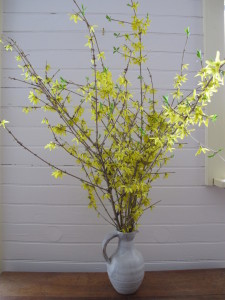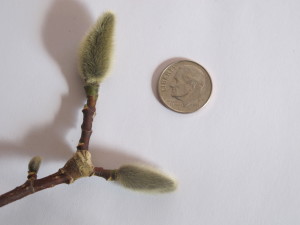Mid-Winter Blahs
I’ve been hearing from friends who are sick of winter. We’re only about half way done with it, but we haven’t had a break – no January thaw this year – and the snow keeps building up. I’ll have to admit that I’m a little tired of shoveling and paying to get my roof cleared. So what can a gardener do? There’s plenty.
First, plant something. Nothing makes us gardeners feel better than planting (unless it’s picking peonies, which we can’t do yet). One of my favorite tricks is to sprinkle poppy seeds on the snow above a flower bed. These seeds are tiny and black, and the sun heats them enough to melt through the snow in the course of the winter. And although the germination rate will be low, I save seeds and have plenty. So it doesn’t matter if only a few find a nice crack in the soil and grow, come summer.
This weekend I will dig out my potting soil and trays and plant some onion seeds indoors. Onions take a long time to grow, so I like to start seeds in February, or early March at the latest. For a long time I just planted onion sets – dry, diminutive onions that are sold to start new onions. But then I learned that one can buy – or start from seed and then transplant – small green onion plants. I find that these plants are more vigorous.
If you don’t want to go through the trouble of raising your own onion plants, some seed catalogs will sell the plants at the appropriate time – but those are a lot more expensive than doing your own from seed.
And it’s not too early to cut branches for forcing. I have cut forsythia and magnolia branches, and will make a trip on my snowshoes to the wetland where pussywillows grow. All three – and others, like quince and apple – can be made to bloom inside the house. Just cut stems and put them in a vase with water.
Forsythia is, in my view, an old fashioned plant. My grandfather had a huge patch of forsythia growing as an island in the lawn. It separated his old 1860’s farmhouse from the vegetable garden. They grew tall and dense. I don’t know if he planted them when he bought the place in the 1920’s, or if they were already there. I suspect he planted them.
There must have been a dozen forsythia plants or so, planted in a double row about 10 feet apart. By the time I came along they created a secret hiding place in the middle between the two rows. My sister and I would crawl into the interior of the patch and we were totally hidden from adult view. A fine hiding place it was.
Grampy lived in Spencer, Massachusetts where winter temperatures probably never went much below zero. But living in the cold north, where we see minus 10 to 25 degrees for night after night, means that when I bought my place in 1970, forsythia was not a good option. Yes, it would survive, but the flower buds would be killed by cold temperatures unless buried by snow. I know, I tried.
Hybridizers kept trying different crosses – hybrids- and finally developed plants good for Zone 4 (with temps as low as minus 30). The late plantsman Paul Joly (here in Cornish, NH) developed one variety, ‘New Hampshire Gold’. Other good ones include ‘Meadowlark’, ‘Vermont Sun’ and ‘Northern Gold’. All those were created just with old fashioned breeding techniques, no genetic engineering.
I love cutting magnolia stems for forcing, even though it takes a long time to get the blossoms to open. I love them because the buds are fuzzy and big, sort of like pussywillows on steroids. I have a mature Merrill magnolia that is my favorite tree. It blooms every year on my birthday in late April, it has green glossy leaves all summer, and it has fabulous fuzzy flower buds that I can look at (and that make me smile) all winter. Fabulous plant. If I were sentenced to live in exile on an island and could bring just one tree, it might well be a magnolia (though an apple tree would be in strong competition).
I usually wait until late March to cut apple branches for forcing because that is when I start pruning apple trees. If you want the stems to bloom, you need to pick mature branches, not those young whips called water sprouts. Those straight stems look great in a vase, but will only produce leaves. To get blossoms, you must have fruit spurs, which are 3 to 6 inch branches – spurs – attached to old wood. You will notice fruit buds, which are larger than leaf buds, near the tip of fruit spurs. These will produce a cluster of blossoms, and leaves, too.
Meanwhile, we should all be thankful for all the snow we’ve had. It protects our perennials, the tender ones, from severe temperatures. I once dug down through 4 feet of fluffy snow and probed the soil in my vegetable garden with a thermometer. Just a couple of inches down the soil was 37 degrees. And only the top inch or so was even frozen. Barren winters, with no snow, are much harder on our plants, even if not so cold as this year.
So bundle up, put on your earmuffs and scarf, and go cut some stems and put them in water. Before too long, you’ll have spring in your house – even if it’s still snowing outside.
Henry Homeyer lives in Cornish Flat, NH. He is the author of 4 gardening books and a children’s fantasy-adventure about a boy and a cougar called Wobar and the Quest for the Magic Calumet. His web site is www.Gardening-Guy.com.




